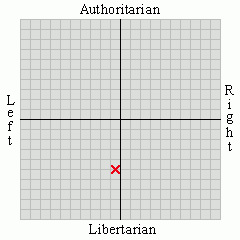Indiana University Southeast, which is just outside of Louisville, Kentucky, has thrust itself into the middle of an anti-constitutional free speech controversy as they become the latest of several public colleges to enact codes limiting students wishing to express opinions to designated free speech zones. For a student to express an opinion on campus requires a permit which may or may not be granted. Not surprisingly, the rule that has been in effect since 2004 is now being challenged.
The purpose of the zones, supposedly… is to ensure the safety alternately of the gathered attendees, and the protesters themselves. We find that the technique is used mainly for political gatherings, although such zones are increasingly being found enshrined in the rules of conduct for university campuses.
The history of the Free Speech Zone is long and checkered. This is a similar tact as was taken by the Secret Service during the George W. Bush administration to limit access to the President and his staff as they travelled to, around and from Crawford, TX and Bush’s Western White House, and the implementation of these exclusionary zones was greatly expanded during the Bush presidency, with these actions frequently meeting with court challenge.
But to be fair, the experimentation with the Orwellian concept of limiting free speech to designated zones is a tactic employed often and by diverse groups from every wing of the political spectrum. Colleges first started implementing rules establishing free speech zones to control the war protesters of the Viet Nam era. At the 1988 Democratic National Convention, the City of Atlanta established a single designated protest zone and enforced it with police actions. Similar zones were erected at the 1992 and 1996 conventions. The exclusion zone at the 2004 convention was likened to a prison camp, with concrete barriers and barbed wire fences.
The existence of such exclusionary zones is based on previous court decisions which stipulate that the government can regulate the time, place, and manner of free expression, but not the content. This selective application of a constitutionally guaranteed right is at the heart of the disagreement at Indiana University Southeast and is the basis for new litigation.
Where we get into the constitutionally vague area is when the restrictions result in censorship more so than just a safe environment. Placing an FSZ in a location far away from the activities, out of sight of the public and the media, serves only a single purpose – the squelching of free speech. Though authorities have in the past denied specifically targeting protesters, on a number of occasions in subsequent court testimony these denials have been contradicted.
With this latest action we have strange bedfellows uniting, with FOX News all up in arms, the ACLU once again involved, and the rather liberal advocacy organization, the Foundation for Individual Rights in Education (FIRE), defending the free speech and due process rights of the college kids. If the case passes muster on the district level, it will be interesting to see if SCOTUS will be willing to stick its paw into another sticky constitutional mess.
###










1 Comments:
Excellent post!
Post a Comment